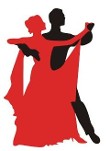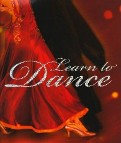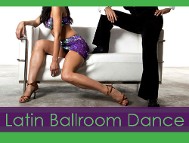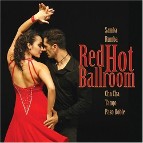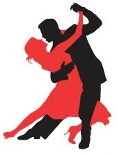Waltz
The waltz is a ballroom and folkdance in 3/4 time, performed primarily in closed position. The waltz became fashionable in Vienna around the 1780s, spreading to many other countries in the years to follow. It became fashionable in Britain during the Regency period, though the entry in the Oxford English Dictionary shows that it was considered “riotous and indecent” as late as 1825. The waltz, and especially its closed position, became the example for the creation of many other ballroom dances.
Subsequently, new types of waltz have developed, including many folk and several ballroom dances. In contemporary ballroom dance, the fast versions of the waltz are called Viennese Waltz. International Standard Waltz has only closed figures; that is, the couple never breaks the embrace.
Foxtrot
The exact origin of the name of the dance is unclear, although one theory often cited is that took its name from its inventor, the vaudeville actor Harry Fox. The dance was premiered in 1914, quickly catching the eye of the talented husband and wife duo Vernon and Irene Castle, who lent the dance its signature grace and style. It was later standardised by Arthur Murray, in whose version it began to imitate the positions of Tango. At its inception, the foxtrot was originally danced to ragtime. Today, the dance is customarily accompanied by the same big band music to which swing is also danced.
When rock and roll first emerged in the early 1950s, record companies were uncertain as to what style of dance would be most applicable to the music. Notably, Decca Records initially labelled its rock and roll releases as “foxtrots”, most notably “Rock Around the Clock” by Bill Haley and His Comets. Since that recording, by some estimates, went on to sell more than 25 million copies, “Rock Around the Clock” could be considered the biggest-selling “foxtrot” of all time.
Over time, the foxtrot split into slow and quick versions, referred to as “foxtrot” and “quickstep” respectively. In the slow category, further distinctions exist between the International or English style of the foxtrot and the continuity American style, both built around a slow-quick-quick rhythm at the slowest tempo, and the social American style using a slow-slow-quick-quick rhythm at a somewhat faster pace. In the context of International Standard category of ballroom dances, for some time the foxtrot was called “Slow Foxtrot”, or “Slowfox”. These names are still in use, to distinguish from other types of foxtrots.
Tango
Tango dance and tango music originated in the area of the Rio de la Plata, and spread to the rest of the world soon after.
Early tango was known as tango criollo, or simply tango. Today, there are many tango dance styles, including Argentine tango, Uruguayan tango, Ballroom tango (American and International styles), Finnish tango, and vintage tangos. What many consider to be the authentic tango is that closest to that originally danced in Argentina and Uruguay, though other types of tango have developed into mature dances in their own right.
In 2009, Argentina and Uruguay suggested the Tango to be inscribed onto the UNESCO Intangible Cultural Heritage Lists, in October of the same year UNESCO approved it.
Quickstep
Quickstep is an International Style ballroom dance that follows a 4/4 time beat, at about 50 bars per minute. An example of a song suitable for the classic quickstep would be Louis Prima’s Sing, Sing, Sing. From its early beginning as a faster Foxtrot, the Quickstep has become quite distinctive. It is danced to the fastest tempo of the ballroom dances.
The Quickstep evolved in the 1920s from a combination of the Foxtrot, Charleston, Shag, Peabody, and One-Step. The dance is English in origin, and was standardized in 1927. While it evolved from the Foxtrot, the Quickstep now is quite separate. Unlike the modern Foxtrot, the man often closes his feet and syncopated steps are regular occurrences (as was the case in early Foxtrot). Three characteristic dance figures of the Quickstep are the chassés, where the feet are brought together, the quarter turns, and the lock step.
This dance gradually evolved into a very dynamic one with a lot of movement on the dance floor, with many advanced patterns including hops, runs, quick steps with a lot of momentum, and rotation. The tempo of Quickstep dance is rather brisk as it was developed to ragtime era jazz music which is fast-paced when compared to other dance music.
Cha Cha
The Cha-cha-cha is the name of a Latin American dance of Cuban origin. It is danced to the music of the same name introduced by Cuban composer and violinist Enrique Jorrín in 1953. This rhythm was developed from the danzón by a syncopation of the fourth beat. The name is onomatopoeic, derived from the rhythm of the güiro (scraper) and the shuffling of the dancers’ feet.
The modern style of dancing the cha-cha-chá comes from studies made by dance teacher Monsieur Pierre (Pierre Zurcher-Margolle), who partnered Doris Lavelle. Pierre, then from London, visited Cuba in 1952 to find out how and what Cubans were dancing at the time. He noted that this new dance had a split fourth beat, and to dance it one started on the second beat, not the first. He brought this dance idea to England and eventually created what is known now as ballroom cha-cha-cha. The validity of his analysis is well established for that time, and some forms of evidence exist today. First, there is in existence film of Orquesta Jorrin playing to a cha-cha-cha dance contest in Cuba; second, the rhythm of the Benny More classic Santa Isabel de las Lajas written and recorded at about the same time is quite clearly syncopated on the fourth beat. Also, note that the slower bolero-son (rumba) was always danced on the second beat.
Samba
Samba is a lively, rhythmical dance of Brazilian origin in 2/4 time. However, there are three steps to every bar (slow, quick-quick), making the samba feel something like a 3/4 timed dance.
The Samba music rhythm has been danced in Brazil since its inception in the late 19th century. There is actually a set of dances, rather than a single dance, that define the Samba dancing scene in Brazil; thus, no one dance can be claimed with certainty as the “original” Samba style. Another major stream of the Samba dance besides the Brazilian Samba dancing styles is Ballroom Samba which differs significantly.
Traditional Brazilian samba includes the partner dance, Samba de Gafieira, as well as Samba no pé, which is danced solo at carnival.
As a ballroom dance, the samba is a partner dance. Ballroom samba, like other ballroom dances, is somewhat disconnected from the origins and evolution of the music and dance that gives it its name. It is a form adapted for its suitability as a partner dance. The dance movements, which do not change depending on the style of samba music being played, borrows some movements from Afro-Brazilian traditional dances such those used in candomblé rituals and the chamadas of capoeira angola.
The ballroom samba is danced to music in 2/4 or 4/4 time. The basic movements are counted either 1-2 or 1-a-2, and are danced with a slight downward bouncing or dropping action. This action is created through the bending and straightening of the knees, with bending occurring on the beats of 1 and 2, and the straightening occurring on the “a”. Samba is notable for its constantly changing rhythms however, with cross-rhythms being a common feature.
Rumba
Rumba is the slowest of the five competitive International Latin dances: the paso doble, the samba , the chachacha and the jive being the others. The international ballroom rumba is a dance of about 120 beats per minute which corresponds, both in music and in dance to what the Cubans of an older generation called the bolero-son. It is easy to see why, for ease of reference and for marketing, rumba is a better name, however inaccurate; it is the same kind of reason that led later on to the use of salsa as an overall term for popular music of Cuban origin.
All social dances in Cuba involve a hip-sway over the standing leg and, though this is scarcely noticeable in fast salsa, it is more pronounced in the slow ballroom rumba. In general, steps are kept compact and the dance is danced generally without any rise and fall. This style is authentic, as is the use of free arms in various figures. The basic figures derive from dance moves observed in Havana in the pre-revolutionary period, and have developed their own life since then. Competition figures are often complex, and this is where competition dance separates from social dance.
Paso Doble
Pasodoble (literal meaning in Spanish: double-step) is a typical Spanish march-like musical style as well as the corresponding dance style danced by a couple. It is the type of music typically played in bullfights during the bullfighters’ entrance to the ring (paseo) or during the passes (faena) just before the kill. It corresponds to the Pasodoble dance (traditional and ballroom).
Paso Doble or pasodoble is a lively style of dance to the duple meter march-like pasodoble music. It actually originated in southern France but is modelled after the sound, drama, and movement of the Spanish bullfight.
Famous bullfighters have been honored with pasodoble tunes named after them. Other tunes have been inspired by patriotic motifs or local characters.
Jive
In Ballroom dancing, Jive is a dance style in 4/4 time that originated in the United States from African-Americans in the early 1940s. It is a lively and uninhibited variation of the Jitterbug, a form of Swing dance. Glenn Miller introduced his own jive dance in 1938 with the song “Doin’ the Jive” which never caught on.
Jive is one of the five International Latin dances. In competition it is danced at a speed of 44 bars per minute, although in some cases this is reduced to between 32 and 40 bars per minute.
Many of its basic patterns are similar to these of the East Coast Swing with the major difference of highly syncopated rhythm of the Triple Steps (Chasses), which use straight eighths in ECS and hard swing in Jive.
Merengue
Merengue is a style of Latin American music and dance with a two-step beat. Partners hold each other in a closed position. The leader holds the follower’s waist with the leader’s right hand, while holding the follower’s right hand with the leader’s left hand at the follower’s eye level. Partners bend their knees slightly left and right, thus making the hips move left and right. The hips of the leader and follower move in the same direction throughout the song. Partners may walk sideways or circle each other, in small steps. They can switch to an open position and do separate turns without letting go each other’s hands or momentarily releasing one hand. During these turns they may twist and tie their handhold into intricate pretzels. Other choreography is possible. Merengue was made the official music and dance of the Dominican Republic by Rafael Trujillo. Some say merengue derived from the “paso de la empalizada” (pole-fence step). Although the tempo of the music may be frantic, the upper body is kept majestic and turns are slow, typically four beats/steps per complete turn.
In the social dancing of the United States the “empalizada” style is replaced by exaggerated Cuban motion, taught in chain ballroom studios for dances of Latin American origin (chachacha, rumba, mambo, salsa).
Mambo
Mambo is a Latin dance of Cuban origin that corresponds to mambo music. Mambo music was invented during the 1930s in Havana by Cachao and his contemporaries and made popular around the world by Perez Prado and Beny Moré. Mambo music developed from Danzón and was heavily influenced by the Jazz musicians that the Italian-American gangsters, who controlled Havana’s casinos, brought to entertain their American customers.
In the late 1940s, Perez Prado came up with the dance for the mambo music and became the first person to market his music as “mambo”. After Havana, Prado moved his music to Mexico, where his music and the dance was adopted. The original mambo dance was characterized by freedom and complicated foot-steps. Some Mexican entertainers became well known dancers like Tongolele, Adalberto Martínez, Rosa Carmina, Tin Tan and Lilia Prado. Most of these accompanied Prado in live presentations or were seen in Mexican films.
The original form of the dance and music are alive and well in Cuba and in taught in dance studios in Mexico City. An example of authentic Mambo dance can be seen in the film ‘The Motorcycle Diaries’.
Mambo on 2
Musically, the old Mambo (Mambo Tipico) is fused with New York Jazz and Swing to create a new salsa genre but retaining much of its original percussion. The addition of new musical instruments such as xylophones, jazz saxophones and steel drums added new melody to the evolving genre.
In New York Style the tempo and timing of the dance is strictly On-2 (based on delay tempo, on the first slap on the tumbao / conga).
Dancers around the world often integrate elements and repertoire from New York into their Salsa routines due to New York Style’s advanced motions and routines.
Many also refer to this style as “Mambo” since it breaks on 2nd beat of the measure. However, there are other dance forms with more legitimate claim to that name; see (Mambo) The accompanying dance to the original Mambo, popularized by Perez Prado which greatly influenced New York big band development was actually not a pure partnership dance. Due to its immense popularity, some of the original mambo steps were incorporated into the ballroom and New York Style curriculum, resulting in the 3rd Mambo Tipico steps (Spanish : Pati-Pami) became the first basic foundation step of New York Style.
Salsa
Salsa movements originate from the Cuban Son dancing of the 1920s, and more specifically through the beat of Son Montuno with strong influences from the dance of Danzon, Mambo, Guaguanco and other Afro-Cuban folkloric dancing. Today’s Salsa dancing is a rich blend of Latin-American and Western influences; some other dance styles that have influenced today’s salsa include Western and Ballroom dancing. Salsa traces a 90 year history in which there are numerous evolutionary paths, sometimes split due to political and social influences. As a result, today there are various distinct styles of Salsa dancing, namely Cuban (“Casino”), New York Style (“Mambo on 2″) and Los Angeles Style (“On 1″). Other Salsa branches include Colombian Salsa (“Cali-Style”) and Miami-Style Salsa.
Salsa is normally a partner dance, although there are recognized solo forms, pole dancing (suelta) and Rueda de Casino where groups of couples exchange partners in a circle. Salsa can be improvised or performed with a set routine, choreography and freestyle.
Bachata
Bachata is a style of dance that originated in the Dominican Republic. It is danced widely all over the world but not identical.
The basics to the dance are three-step with a Cuban hip motion , ended by a tap on the 4th beat just like in other Latin dances (salsa etc.). The knees should be slightly bent so the performer can sway the hips easier. The movement of the hips is very important because it’s a part of the soul of the dance. Generally controlled full body movement is crucially important in the dance, but most of it comes from the hips. In partnering, the lead can decide whether to perform in open or closed position , depending on the lead’s comfort position. Dance moves, or step variety, during performance strongly depends on the music (such as the rhythms played by the different instruments), setting, mood, and interpretation. Unlike Salsa (the most traditional Latin Dance), Bachata does not require many complex turns; although they are very well used when the musicality is understood and interpreted correctly. The leading is done just like in most other dances, with a “pushing and pulling” hand communication. If this is done correctly, the follower should clearly understand the intended direction. Although there is a lot of body movement in Bachata dancing, the hand communication is better understood when most of the movement is performed by the lower body (from waist down); i.e. hips and footwork.
Kizomba
Kizomba is one of the most popular genres of dance and music created in Angola. Derived directly from Zouk music, sung generally in Portuguese, it is a genre of music with a romantic flow mixed with African rhythm. The kizomba dancing style is also known to be very sensual.
Kizomba was developed in Angola late 1989 to early 1990s. It is a fusion of Semba (the predecessor of samba) with the Zouk music styles from the French Caribbean Islands, with influences from other Lusophone countries. It is also performed in other lusophone African countries and Portugal. It is known for having a slow, insistent, somewhat harsh, yet sensuous rhythm; the result of electronic percussion. It is ideally danced accompanied by a partner, very smoothly and slowly, though not too tightly. A rather large degree of flexibility in the knees is required, owing to the frequent requirement that dancers bob up and down.
The movement of Kizomba is not side-to-side with the hips as in many of the Latin dances, but a forwards body ripple with the dancers’ stomachs connecting lightly on the offbeat.
The waltz is a ballroom and folkdance in 3/4 , performed primarily in closed position. The waltz became fashionable in Vienna around the 1780s, spreading to many other countries in the years to follow. It became fashionable in Britain during the Regency period, though the entry in the Oxford English Dictionary shows that it was considered “riotous and indecent” as late as 1825. The waltz, and especially its closed position, became the example for the creation of many other ballroom .Subsequently, new types of waltz have developed, including many folk and several ballroom . In contemporary ballroom , the fast versions of the waltz are called International Standard Waltz has only closed figures; that is, the couple never breaks the embrace.The exact origin of the name of the is unclear, although one theory often cited is that took its name from its inventor, the vaudeville actor Harry Fox. The was premiered in 1914, quickly catching the eye of the talented husband and wife duo Vernon and Irene Castle, who lent the its signature grace and style. It was later standardised by Arthur Murray, in whose version it began to imitate the positions of Tango. At its inception, the foxtrot was originally danced to ragtime. Today, the is customarily accompanied by the same big band music to which swing is also danced.When rock and roll first emerged in the early 1950s, record companies were uncertain as to what style of would be most applicable to the music. Notably, Decca Records initially labelled its rock and roll releases as “foxtrots”, most notably “Rock Around the Clock” by Bill Haley and His Comets. Since that recording, by some estimates, went on to sell more than 25 million copies, “Rock Around the Clock” could be considered the biggest-selling “foxtrot” of all .
